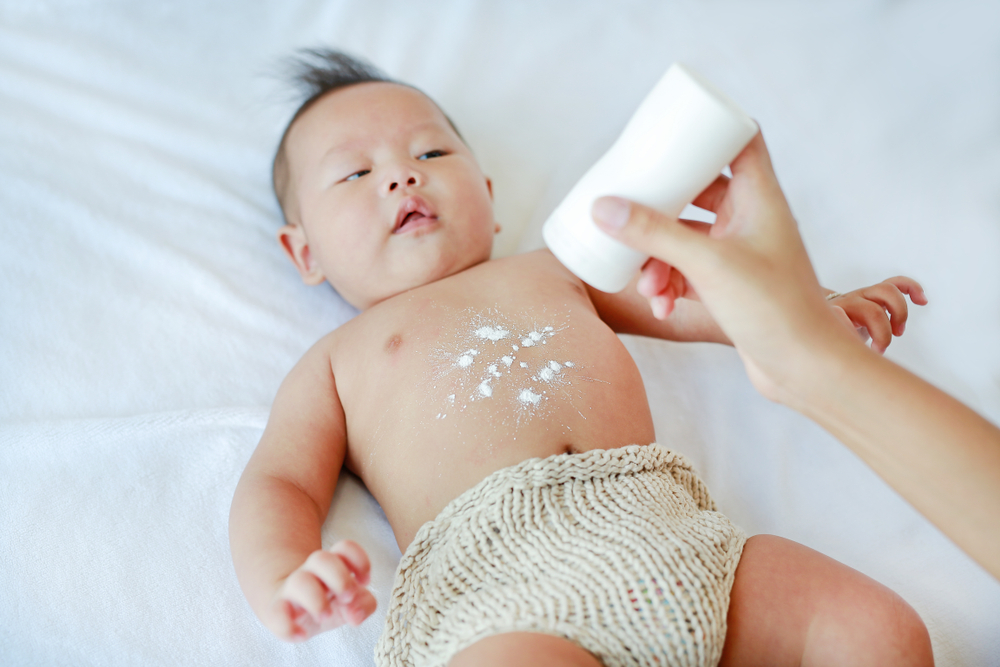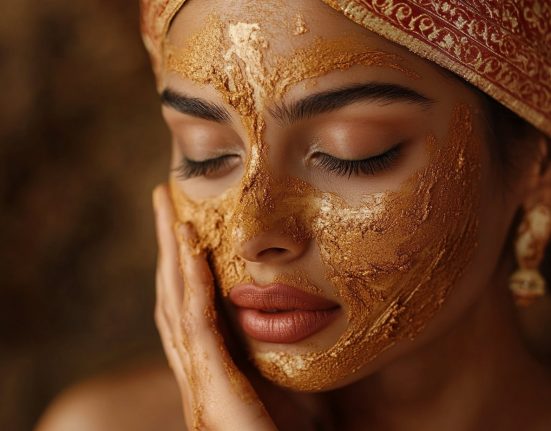One of the most common products in the baby care aisle of any big box store is baby powder – which has long been used to help prevent and treat diaper rash.
However, experts have issued warnings about baby powder, both because of inhalation risks and because a common ingredient, talcum powder, has been linked to cancer. Learn more about the safety of baby powder below, including what you can use instead.
What is baby powder used for?
Baby powder has smoothing, anti-caking properties, and typically works by absorbing moisture and preventing friction – so it’s a popular choice to ward off diaper rashes.
The primary ingredient in traditional baby powder is talcum powder, or talc, a mineral made from a combination of magnesium, silicon, oxygen, and hydrogen. (Talc is also sometimes used in other cosmetics, like powder foundation and eyeshadow.)
But because of safety concerns in recent years, many manufacturers have stopped using talc in baby powders and now use cornstarch instead.
Is baby powder safe?
Experts recommend against talc-based baby powder because babies don’t really need it, and because it can irritate their delicate skin.
The American Academy of Pediatrics (AAP) points out that baby powder can cause breathing trouble and lung damage for babies if they inhale the particles, and may also expose them to asbestos.
It’s hard to keep powder out of the air when you’re using it. This is especially true of talc-based powders, with their small, easily inhaled particles. But other powders, including cornstarch-based powders, can also be inhaled.
Even a little bit of powder can irritate a baby’s tiny lungs – especially if the baby has a high risk of respiratory illness. Those at high risk include premature babies, babies with congenital heart disease, and babies who have had RSV or frequent respiratory illnesses.
Can baby powder cause cancer?
Using baby powder during diaper changes isn’t typically associated with any cancer risk, especially if the talc doesn’t contain asbestos.
In the past, baby powder with talc has been linked to ovarian cancer, but it’s important to know that this risk was found only in adult women who used baby powder near their genitals, providing a way for the talc to enter the reproductive system. Even then, more recent studies haven’t found a significant link between talc and ovarian cancer.
In some cases, inhaling talc may increase your risk of lung cancer, but the evidence isn’t fully established and usually looks at people who are exposed to a high volume of talc – like miners and millworkers who are exposed to natural sources of talc at work. (Again, not a concern for your baby!)
How to use baby powder safely
If your baby isn’t at high risk and you decide to use powder, do so sparingly. To prevent lung irritation, don’t put baby powder directly on or near your baby. Instead, put the powder on your hands first, away from your baby, before patting the powder on their diaper area.
Keep the powder container well out of reach of your baby and of any older siblings too. You don’t want small hands to get a hold of it or knock it over and produce a cloud of powder that could be inhaled.
To prevent skin irritation, don’t allow powder to build up in your child’s diaper area. At every diaper change, wash away any powder that may have accumulated, especially in the folds of your baby’s skin.
What you can use instead of baby powder
If you’ve always been a baby powder fan, don’t worry: There are other alternatives to talc-based powder you can use to treat and prevent diaper rash.
- Cornstarch-based powders, which still contain an inhalation risk but aren’t linked to asbestos or cancer concerns
- Baking soda
- Tapioca or arrowroot starch
- Petroleum jelly
- Diaper rash creams with zinc oxide








